What’s a high yield cartridge?
A high yield cartridge contains more ink or toner and can print out more pages than a standard cartridge.
Page yield is a common printer term that refers to how many pages that cartridge can produce. Larger cartridges that contain more ink have a higher page yield–in short, high yield.
What’s the difference between a high yield and standard yield cartridge?
Cartridges are usually available in three different sizes: standard yield, high yield (XL) and, occasionally, extra high yield (XXL). Some printer manufacturers may also say high capacity or extra high capacity but essentially these are the same as high yield and extra high yield respectively. The yield (or page yield) corresponds to the number of pages you are expected to print with a given cartridge.
What does HP XL Ink mean?
Most high yield ink cartridges include an “XL” after the cartridge part number. This is how you can distinguish standard cartridges from high yield cartridges. For example, the HP 902 is the standard yield cartridge while it’s high yield counterpart is the HP 902XL.
For HP toner cartridges, standard yield toner cartridges have an “A” after the cartridge number and high yield toner cartridges are indicated by an “X”. For example, the HP 26A is a standard toner cartridge, while the HP 26X is its high yield cartridge counterpart.
Standard Yield Cartridge: A standard yield cartridge is the most common cartridge size on the market and usually prints a smaller number of pages compared to a high yield or extra high yield cartridge, and can be purchased at a cheaper price. If you don’t print often, standard cartridges are right for you. It wouldn’t make sense spending for the pricier larger version if you don’t really need that much ink. Ink dries up when not used for awhile so don’t spend money on something that might just go to waste.
High Yield Cartridge: A high yield (also called high capacity) cartridge contains more ink or toner than a standard printer cartridge, prints more pages, and is more expensive than standard yield cartridges. However, if you normally print a lot, getting a high yield cartridge is cheaper in the long run.
Extra High Yield Cartridge: Not all cartridges have an extra high yield option. An extra high yield cartridge contains even more ink and costs more than a high yield cartridge. This is more suitable in a document-heavy office setting.
Do high yield cartridges fit in the same slot?
Higher yield cartridges fit in the same slot as standard size cartridges. Your printer should be compatible with all sizes of your printer’s cartridge. For instance, HP printers that use the HP 62 should also be able to use the HP 62XL.
How you install higher yield cartridges is no different from how you install the standard cartridge. All sizes should click into place. Check out our video below for a quick demonstration!
How much more ink does an XL cartridge have?
An XL ink cartridge can have at least 50% to 100% more the amount the amount of ink in a standard cartridge. The short answer, it really depends. But there’s always more ink volume in an XL cartridge than a standard cartridge.
Are high yield cartridges physically bigger than a standard cartridge?
Most high yield cartridges are the same size as the standard cartridge and are designed to fit in the same slot as a standard yield ink. The only difference is that standard cartridges usually aren’t filled up all the way. High yield version of the cartridge comes with more ink.
However, there are some physically larger high yield cartridges but they should still fit in the same slot as the standard version. Printers will not have a separate slot for a high yield ink cartridge.
Are high yield cartridges worth the extra cost?
High yield ink or toner cartridges are a more economical choice if you print regularly. You make up for the more expensive cartridge price of an XL cartridge in the long run. For example, instead of buying two standard yield cartridges over two months, you only buy one XL cartridge. Take the HP 67, a standard yield HP 67 black ink cartridge costs $17 each and a high yield 67XL black costs $25.89. The XL 67 can print up to 240 pages while a standard prints only half that. So why pay for two standard cartridges when you can get the same volume of ink for almost $10 less with an XL?
So does it matter if you buy an XL cartridge? Absolutely. High yield XL cartridges could mean hundreds of dollars difference in a year if you print regularly. It could also mean cutting down on the number of ink cartridge replacements you have to do.
When is it not worth buying an XL cartridge? If you use your printer about once a month or once every two months, we recommend sticking with a standard yield cartridge simply because your ink cartridges might dry up when left unused. You can later adjust your cartridge size when your printing frequency increases.
How to tell a high yield cartridge from a standard cartridge
The quickest answer: for most ink cartridges, check if it has XL or XXL in the cartridge label.
The long answer, depends on the printer manufacturer. Because there is no standard naming convention for high yield cartridges, there are some variations on how printer manufacturers name their high yield cartridges. Let’s take a look at a few popular brands to illustrate.
HP®
Inkjet Cartridges: For HP, let’s take a look at the HP 910 cartridge. The 910 comes in three sizes: standard, high yield, and extra high yield. Printers that use the HP 910 cartridge can use any of these cartridge sizes and this is how they’re named:
| Cartridge Size | Cartridge Name | Page Yield |
|---|---|---|
| Standard | HP 910 | 300 Pages |
| High Yield | HP 910XL | 825 pages |
| Extra High Yield | HP 916XL | 1,500 pages |
So if you need the largest size of the HP 910, you should get the HP 916XL. HP ink cartridges usually only come in standard and high yield sizes with the high yield version having “XL” appended to the cartridge name.
Laser Cartridges: HP toner cartridge sizes are named a bit differently. A standard HP toner cartridge is signified by an “A” appended to its name, the high yield version is signified by an “X” appended to its name, and the extra high yield version has a “Y” appended to its name. Below are some examples:
| Cartridge Size | Cartridge Name | Page Yield |
|---|---|---|
| Standard | HP 37A | 11,000 pages |
| High Yield | HP 37X | 25,000 pages |
| Extra High Yield | HP 37Y | 41,000 pages |
More examples are the HP 12a and HP 12x, and the HP 80a and HP 80x. The extra high yield cartridge size isn’t available for all cartridges. HP cartridges commonly only come in standard and high yield sizes.
Canon®
Inkjet Cartridges: Canon names their ink cartridges in a similar fashion as HP. High yield cartridges have XL appended to the cartridge name and extra high yield cartridges usually have XXL appended to the cartridge name. Let’s take the Canon PGI-850 black inkjet cartridge an example:
| Cartridge Size | Cartridge Name | Page Yield |
|---|---|---|
| Standard | Canon PGI-280 Black | 200 pages |
| High Yield | Canon PGI-280XL Black | 400 pages |
| Extra High Yield | Canon PGI-280XXL Black | 600 pages |
Printers that use the Canon PGI-280 can also accommodate the Canon PGI-280XL and the PGI-280XXL.
Laser Cartridges: Canon doesn’t have the higher yield option for most of its toner cartridges but the ones that do have an “H” appended at the end of the cartridge name. A few examples of popular Canon toner cartridges without a high yield size are the Canon 128 and Canon 118. Below is a table that illustrates how Canon names its high yield toner cartridges.
| Cartridge Size | Cartridge Name | Page Yield |
|---|---|---|
| Standard | Canon 131 | 1,400 pages |
| High Yield | Canon 131H | 2,400 pages |
Brother®
Brother toner cartridges have different names for each cartridge size so it is best to watch out for that. The TN820/TN850/TN880 cartridge lineup is a great example of how Brother names their different size cartridges.
| Cartridge Size | Cartridge Name | Page Yield |
|---|---|---|
| Standard | Brother TN820 | 3,000 pages |
| High Yield | Brother TN850 | 8,000 pages |
| Super High Yield | Brother TN880 | 12,000 pages |
Printers that are compatible with the Brother TN820 cartridge are also compatible with the TN850 and TN880 cartridges.
Epson®
Epson inkjet cartridge sizes follow the same format as HP inkjet cartridges with XL indicating a high yield cartridge and XXL for extra high yield cartridges. Extra high yield Epson cartridges are also a rarity just like HP and Canon. Below is an illustration of how Epson names its standard and high yield cartridges.
| Cartridge Size | Cartridge Name | Page Yield |
|---|---|---|
| Standard | Epson 822 Black | 350 pages |
| High Yield | Epson 822XL Black | 1,100 pages |
Pricing
The more ink a cartridge has, the more expensive it is. By how much? That depends on the cartridge. Let’s compare some OEM cartridge prices to illustrate the price differences of a standard and high yield cartridge.
- An HP 63 currently sells for $20.99* and an HP 63XL sells for $39.99, that’s practically twice the price of the standard cartridge.
- An HP 910 is currently priced at $19.99 while its high yield counterpart, the HP 910XL, is priced at $40.99.
- For HP toners, the HP 80X is the high yield version of the HP 80A toner cartridge. The HP 80a is currently priced at $114.99 while the HP 80x costs $196.99.
| Cartridge Size | Name | Page Yield | Brother Price (OEM) | LD Brand Compatible Price |
|---|---|---|---|---|
| Standard | HP 80A | 2,700 pages | $114.99 | $26.99 (76% cheaper) |
| High Yield | HP 80X | 6,900 pages | $196.99 | $34.99 (82% cheaper) |
Apart from saving money with high yield cartridges, you can also save a significant amount of money by using aftermarket ink and toner cartridges. These alternative cartridges work just as well with your printers and have been proven to deliver similar print results and the same number of prints as name-brand OEM cartridges. Here’s a table for comparison:
| Cartridge Size | Name | Page Yield | Brother Price (OEM) | LD Brand Compatible Price |
|---|---|---|---|---|
| Standard | Brother TN820 | 3,000 pages | $67.49 | $18.99 (71% cheaper) |
| High Yield | Brother TN850 | 8,000 pages | $109.99 | $19.99 (81% cheaper) |
| Super High Yield | Brother TN880 | 12,000 pages | $126.49 | $22.99 (81% cheaper) |
In a nutshell, there is a print capacity that fits everyone’s needs. If you print regularly, paying a little bit more for a high yield cartridge is worth it in long run because you will usually get a lot more prints than your average standard yield cartridge.
*Savings based on price comparison between remanufactured/compatible cartridge prices on www.LDProducts.com and OEM cartridge and printer prices from the listed retailers: Staples. All prices effective as of June 15, 2023. OEM names are registered trademarks of their respective owners and are not affiliated with, and do not endorse LD Products.


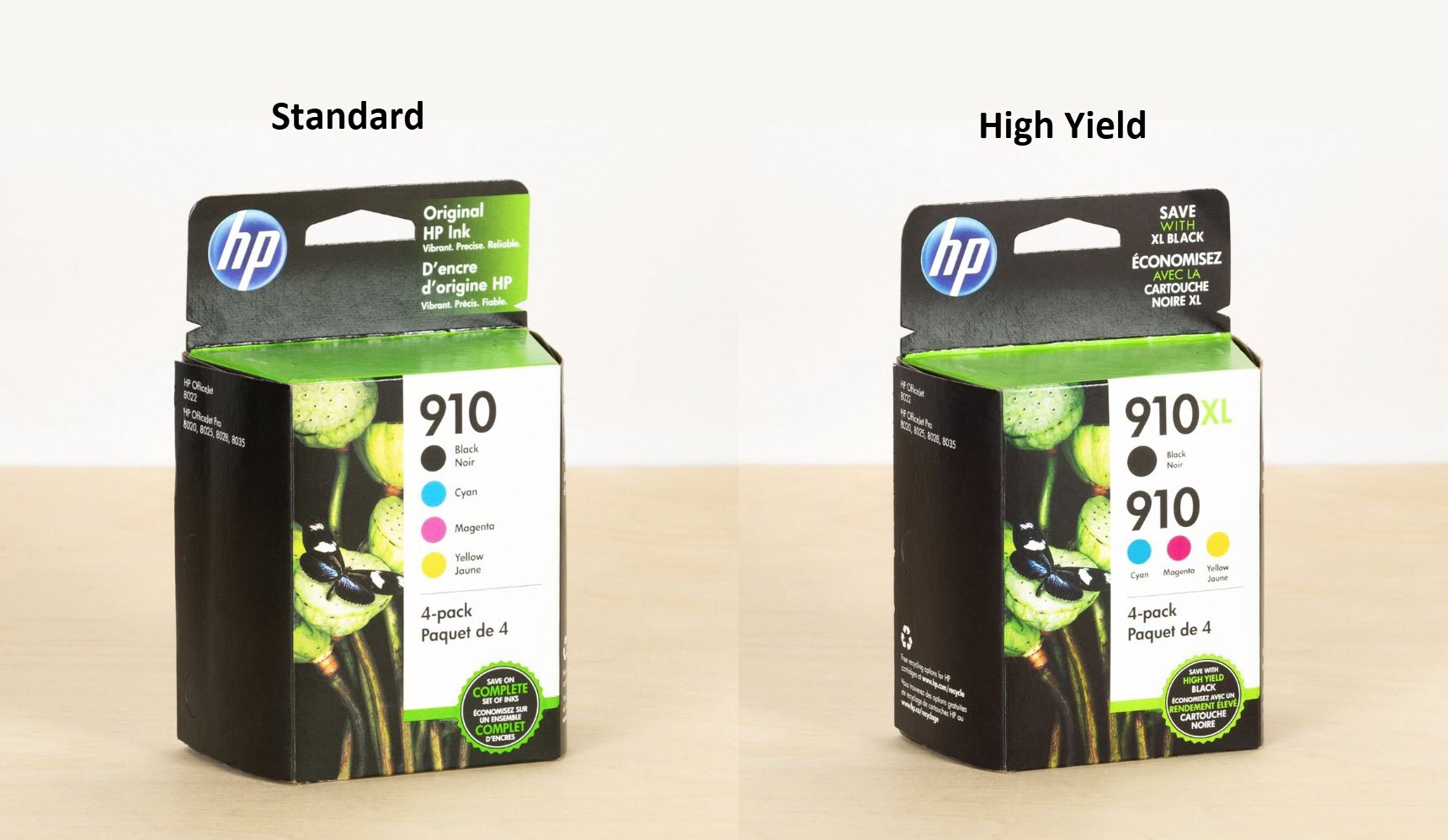



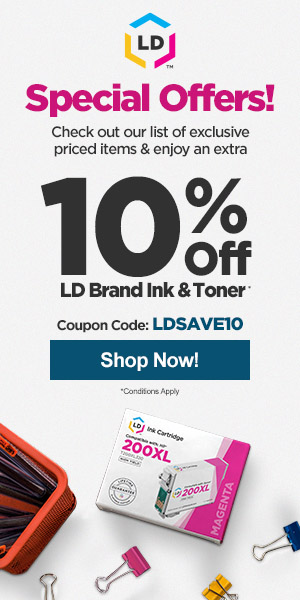

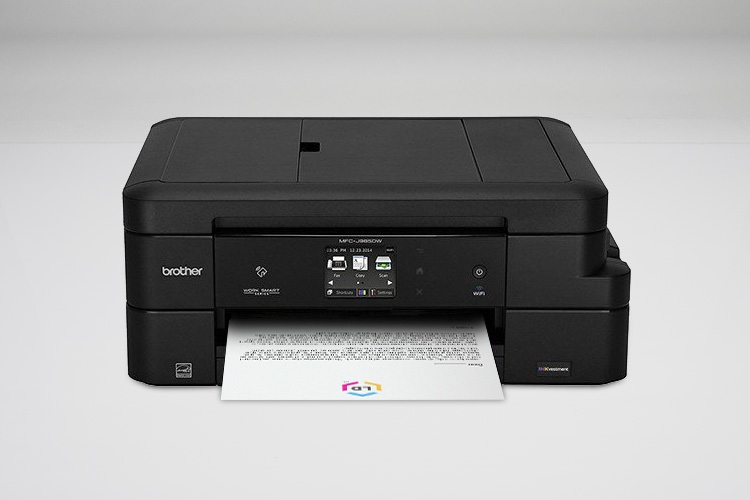

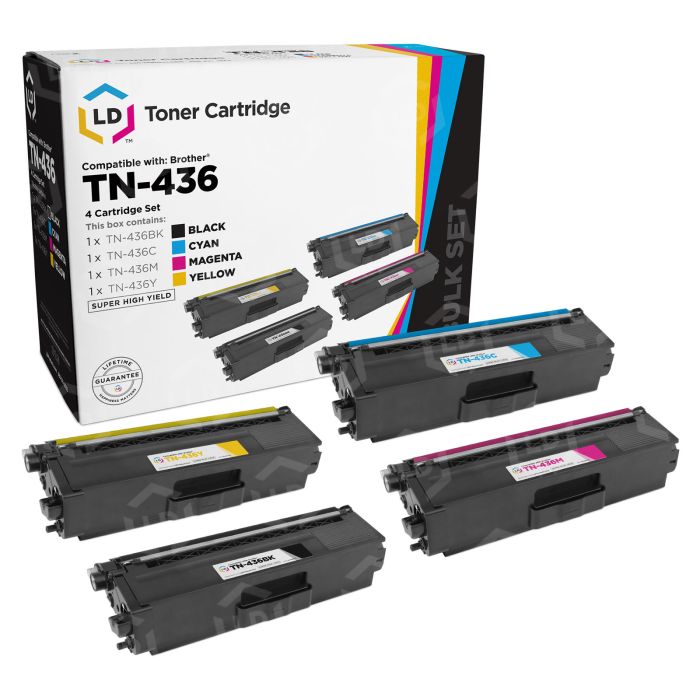

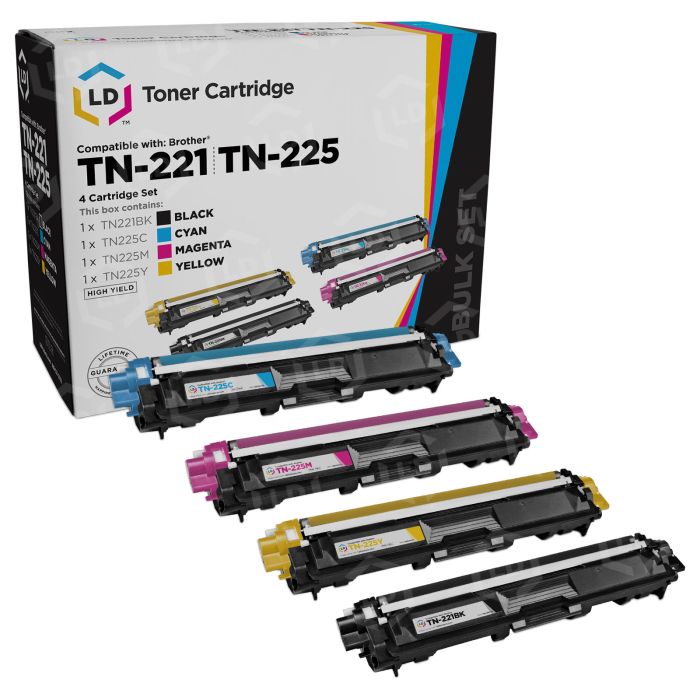
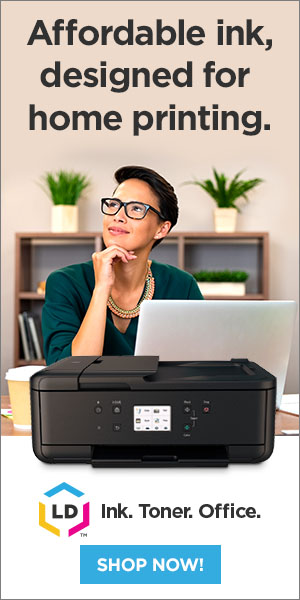
[…] print off a large number of documents, then it is a good idea to look for a printer that has uses high yield cartridges. This means you will be getting more pages out of a single cartridge, ultimately saving you money […]
MY EPSON STYLUS NX420 USES NO.125 INK CARTRIGES. CAN I INSER/USET EITHER 126 or 127 INK CARTRIGES FOR HIGHER INK CAPACITY? OR ARE THEY TOO LARGE TO FIT?
The Epson Stylus NX420 uses only Epson 124 and 125 cartridges. Epson 126 / 127 is not compatible with your printer so yes they won’t fit. Forcing it might result in costly damages to your machine. I think if you want to save more on ink in the long term, it’s worth getting the next model up which is the NX430.
[…] you do a lot of printing and don’t want to have to replace your cartridges constantly, HP offers high-yield cartridges that allow you to go longer in between replacements. The standard HP 902 cartridge, for example, […]
How do you find the number of copies made by an HP62XL cartridge?
You can look it up online! The HP 62XL prints about 600 pages depending on usage. A standard HP 62 prints only about 200 pages.
I use a HP63 type cartridge. what do you suggest I use in XL for my HP printer and what is the cost
Hi Jim,
If your printer uses the HP 63 cartridge, the high yield version you are looking for would be the HP 63XL. The HP 63XL is the exact same size as a regular HP 63, it’s just filled with more ink so it will last longer in your printer. You can find an LD brand remanufactured version of the HP 63XL series here: https://www.ldproducts.com/HP/Remanufactured/Ink-Cartridge/HY-Black/F6U64AN/68268-Product.html.
I have a Brother HL-L6200 DW in the office. I often use Extra High yield toner cartridges – any idea if higher yield cartridges have an impact on the drum unit? I’m finding that i need to replace the drum unit every 3 months or black marks start to show up at the edges.
Your discussion provides a logical statement: “The more ink a cartridge has, the more expensive it is.”
How much ink is contained in these LD cartridges:
PG-240 black
PG-240XL black
PG-240XXL black
The way I see it ALL cartridges should be filled till full otherwise it’s a ripoff. All cartridge casings are same size. So why fool the public when they think they are getting a full cartridge every purchase.
I bought 902XL Black as well as the 3 color 902 cartridges from you a while ago and installed the Black cartridge, which worked great. Yesterday it was time to replace the color cartilages. My HP Office JET 6958 would not recognize these cartridges.
Is there something I need to do to make them work?
Dan Veno
Hi Dan, I am sorry you are having trouble with those 902 cartridges. You can try cleaning the gold contact points on the end of the cartridge with a lint-free cloth. Sometimes if finger print oil or dust gets on the contacts it can cause a faulty reading on your printer. If you do that and still have trouble, give our customer service team a call at 888-321-2552 and we can get replacement cartridges sent out to you.
I have an HP Desk Jet 2130.Due covid situation the importer of the printer has up to now not received his stock of cartridge 63 or 63 XL.But,I have been ale to procure a cartridge 302 XL fro UK.Unfortunately, after fixing same, the printer indicates that the cartridge is incompatible. How can I make it function. Thank you for your kind help. Regards. Indarjeet.
Hi there, unfortunately there is no way to make the HP 302XL work since it uses a different chip. Your printer will only work with the HP 63 or 63XL ink series. If you are still in need of those cartridges we offer a compatible version here: https://www.ldproducts.com/HP/Remanufactured/Ink-Cartridge/HY-Black/F6U64AN/68268-Product.html
Hope this helps!